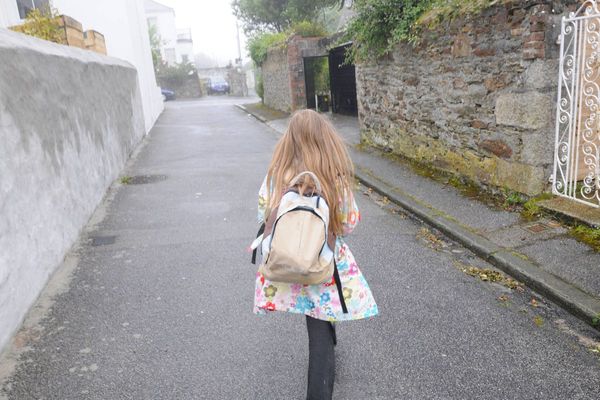On a sun-dappled trail in the woods of Calabasas, Jess Starwood narrows her eyes and gasps with glee. Scrambling up a leafy hillside, she points to a small hump in the ground, covered in leaf litter. “That’s a shrump,” she says – a mushroom hump, where a mushroom may be pushing up the ground as it emerges.
There were times when Starwood, an author, naturalist and foraging guide, would walk this trail and consider herself lucky to find even one mushroom. Today, on one of the hikes she regularly leads, we uncover nearly 50 mushrooms of 10 different species pushing up through the ground, growing out of damp logs, or springing from the dark earth.
The reason? A slew of rainstorms walloping California throughout the winter, creating the ideal conditions for mushrooms to thrive. Experts are calling it a once-in-a-generation shroom boom, with highly saturated soils extending the mushroom season far past its usual peak of January and February. That’s brought enthusiasts in droves to forage mushrooms for cooking and medicinal uses, and given researchers a rare opportunity to survey the breadth of fungal diversity that is usually hidden underground.

I bend down to peek at the shrump Starwood identified. From the top it looks ordinary enough, but from the side, I can see a fruiting body is pushing out of the ground. With a grin, Starwood carefully extracts a golden chanterelle and holds it up, delicately dusting off the dirt with a brush.
“It’s my favorite, my absolute favorite mushroom,” she says, holding it the light. She passes it around and everyone sniffs and holds it. Heavier than I expected, it smells earthy.
We pass around other findings – small mushrooms called candy caps, bright yellow jelly fungus, and brown turkey tails that resemble clam shells. Some smell like cinnamon, others like citrus or the dark maple syrup. The whole experience feels a bit like describing wines – except the bottles are hiding beneath damp leaves for us to find.

Between HBO’s fungus-based show The Last of Us and the legalization of “magic mushroom” psilocybin in states including Oregon and Colorado, mushrooms are having a moment. And in southern California, that moment is happening right now, emerging from the soil.
“It’s the year of the mushroom in southern California,” says Noah Siegel, a mycologist who has authored books on mushrooms all over North America. He points out the rains started early, in September, and the ground has mostly stayed wet for months – an unusual occurrence in the area. “This may not happen again for 20 years or more.”
Stunning diversity
There is a kingdom of plants, a kingdom of animals – and then there are mushrooms. While plants use photosynthesis to make their own food, the underground part of the fungus uses enzymes to “digest” other substances that it can use as food. In southern California, the biggest habitat for mushrooms is oak trees – many so-called mycorrhizal species have special relationships with the trees’ roots.
“Most of the charismatic mushroom species grow in special association with trees, where they engage in this mutual ecological partnership,” says Rudy Diaz, resident mycologist at the Los Angeles Mycological Society. “The trees provide carbohydrates and the fungus, through having a broad expanse of root-like cells, is able to acquire minerals that benefit the tree.”
The part we see above ground is just the fruit of the organism – the rest sits below the surface, patiently biding its time for the perfect conditions to send up fruit. The wait can be long: a recent scientific paper described spores coaxed into growing after 250 years.

But with historic amounts of precipitation, this year the conditions have been ideal. That’s offered a thrilling chance for researchers like Diaz to study the huge variety of mushroom species that don’t always reach the surface. So much about the life of fungi is secret. Siegel says in southern California, probably half the mushrooms are undescribed. That’s part of the reason for the Fungal Diversity Survey (FunDis), a citizen science project that catalogs mushrooms in order to better understand them. Diaz points out that the Los Angeles basin is recognized as a biodiversity hotspot – over the past 150 years, a strong knowledge base has been built for the plants and animals here, “but not for the fungi, which comprise a separate kingdom upon which plants and animals depend”.
The reason why fungi here have been understudied is because most of them only become visible at a macroscopic scale for short periods of time, when environmental conditions are favorable for their reproduction. Put another way: plants make themselves easy to identify, Siegel says: oak trees are there all the time. But take that oak tree and bury it underground, make it microscopic, and for one week each year, have it stick out an acorn to see. “That’s what mushrooms are doing.”

FunDis has enlisted mushroom hunters from across the state to explore permitted lands and make high-quality, well-documented collections of macrofungi, which are dried and sampled for DNA sequencing. Diaz recently foraged for the project near the southern California town of Lake Elsinore, where he found many species, including Inocybe fraudans (which smelled like red hots and rubber), Telamonia (which smelled like Play-Doh and citrus), and some bolete (which smelled metallic or like dried blood). When he got home, Diaz dried the specimens and logged the notes; now he is preparing to take tissue samples for DNA sequencing. The dried specimens will be deposited in research collections (fungaria) at California State University East Bay and the University of California, Los Angeles.
The diversity of mushrooms in this region is stunning: from the medicinal turkey tail to edible chanterelles and southern candy caps to the ominously named destroying angel, which is toxic. Diaz has a favorite local fungus: the jack-o’-lantern mushroom, a bioluminescent species of wood-decomposing fungus that produces its own green glow. The toxic jack-o’-lantern lost out to the golden chanterelle in a public vote to name the California state mushroom this year, much to Diaz’s disappointment.

For the local mycological society, the rains have come at a fortunate time. At the group’s annual mushroom fair in February, they sometimes only have pictures of mushrooms to display for the public. This year, they had a bounty of fungi to show.
“The ‘shroom boom’ in media and pop culture has aligned with this huge ecological mushroom boom for southern California where all of this interest in mushrooms comes at a very opportune moment,” Diaz says, adding that the mycological society’s membership has shot up this year. “There are people with this craving to learn, but we’re only able to offer as much as the rain can give.”
‘Taste the season’
The climate crisis is intensifying the swings from drought to deluge that California saw this year, but no one knows the impact this will have on fungi, in part because there’s no real baseline data for fungi, Siegel says. Scientists do know the state’s rainy season is getting shorter, which could leave less time for mushrooms to fruit.

Siegel points out that with this year’s bloom, even another wet year may not fuel the same diversity and intensity of mushrooms. “If you got this amount of rain next year, you wouldn’t get so much – because superbloom years use up the mushroom’s energy to fruit that much,” he says. “The following year might be good, but not knock-your-socks-off amazing.”
Back on the trail, Starwood tucks a heap of turkey tails – fan-shaped mushrooms that are fuzzy on the bottom – into her bag. She’ll pop them into a soup later, both for flavor and for their medicinal benefits. Starwood is most interested in mushrooms for culinary uses.
“The act of eating is our most intimate connection to the earth,” she tells me. “So it’s really getting to know the unique flavors, and being able to taste what the season is like.”

Back at home, I follow her instructions for cooking the chanterelle, carefully cleaning and pulling apart the structure with my hands before dropping it into a dry pan. As it heats up, the mushroom releases a surprising amount of water – a reminder of all that rain. After adding butter, garlic and salt, I move the velvety morsels around my mouth and think of Starwood’s advice to really relish the season. I can almost feel the sunlight from the trail on my tongue and sense the earth on my lips.
A year like this should be savored, after all. “What people should realize is that this may not happen again for 20 years or so, because all the conditions have to be exactly right,” says Siegel. “You have a couple more weeks – don’t miss out.”







